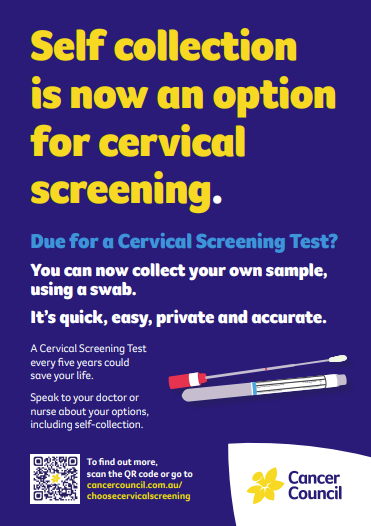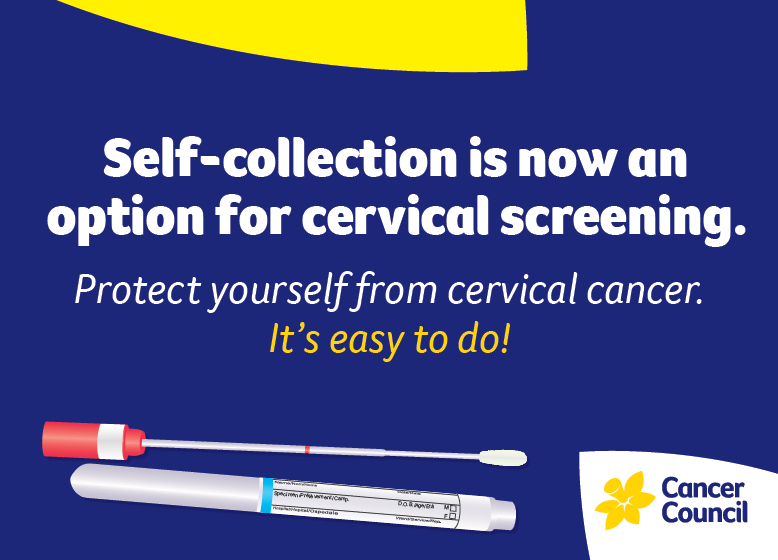You can help increase participation in cervical screening.
Talk to your patients about self-collection.
From 1 July 2022, the National Cervical Screening Program (NCSP) expanded screening test options, offering self-collection as a choice to all people participating in cervical screening. Self-collection allows screening participants to have the ability to take their own vaginal sample for HPV testing; for many people removing a significant barrier to participation in screening.
This means that all NCSP participants aged 25-74 years have the choice to screen either by a self-collected vaginal sample or a clinician collected sample from the cervix (accessed through a healthcare provider in both cases). Healthcare providers are well placed to talk with patients about their cervical screening options to help them make an informed choice.
Importance of self-collection as an option for participants
Self-collection provides a level of control and choice for patients, removing a significant barrier to participation in screening.
There are some groups that are less likely to screen, including:
- Aboriginal and/or Torres Strait Islander women;
- culturally and linguistically diverse communities;
- people who identify as LGBTIQ+;
- people with disabilities;
- people who have experienced sexual violence;
- post-menopausal women;
- and people who have had previous negative cervical screening experiences.
Self-collection may be more acceptable to these groups.
Accuracy of a self-collected sample for the detection of HPV
Recent evidence has shown that the sensitivity and specificity of HPV testing to detect CIN2+ in self-collected samples were similar to those for clinician-collected samples when using validated PCR-based HPV assays.
A self-collected sample is taken from the vagina (not the cervix). It can be tested for the presence of the human papillomavirus (HPV) but not cytology (cervical cell abnormalities). If HPV is detected on a self-collected sample, depending on the type of HPV, it is recommended a patient should have a speculum examination with a cervical sample collected for liquid-based cytology (LBC), or be referred directly for colposcopy.
Role of healthcare providers in self-collection

Self-collection poster

Self-collection cards in a variety of languages
English Arabic Chinese Simplified Dari Khmer Nepali Thai Vietnamese
NCSP Clinical Guidelines
Self-collection of Cervical Screening Tests is available for everyone who is eligible for the National Cervical Screening Program (NCSP), making it easier to participate, especially for people who have never screened or do not screen regularly. Updated NCSP Clinical Guidelines now provide the latest advice on the expanded eligibility to screen via self-collection, preparing health professionals for changes to the NCSP.
NCSP Clinical Guidelines